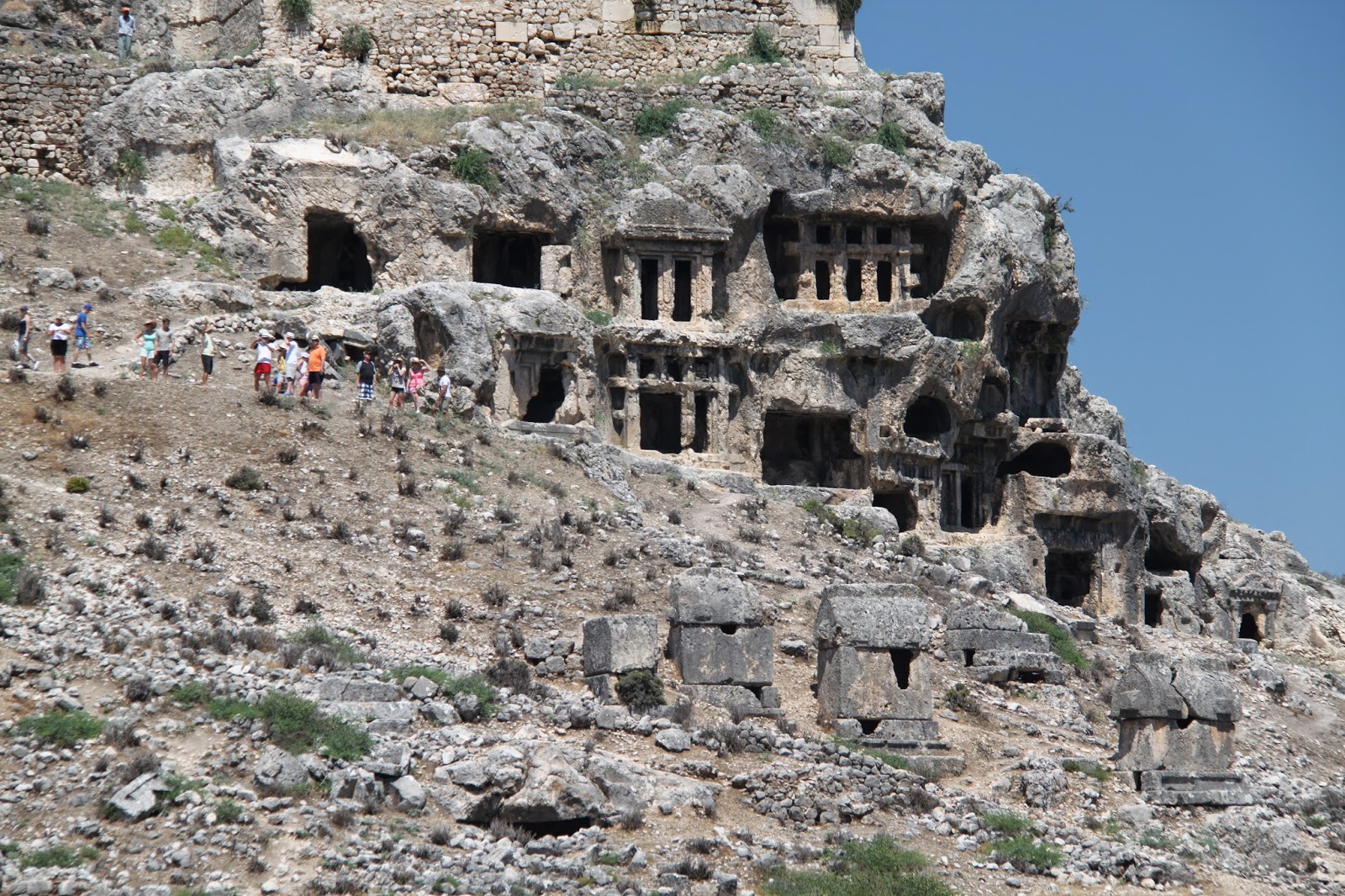#672 Tlos (Tlawa), Turkey
Friday, May 23, 2014
Add Comment

 High above the scenic Xanthos valley lies the religiously important Lycian city, Tlos, which was known to the Lycians as Tlawa. Around 4000 years of civilization have layered together, as the area was subsequently controlled by Romans, Byzantines, and Ottoman Turks, each of which left their layer of civilization (it is one of the few Lycian cities to have been continuously inhabited up to the 19th century). It was one of the six important Lycian cities, perhaps even the most important, and in mythology, it was the home of Bellerophon and his winged horse Pegasus. Despite the layers of civilization, it was "rediscovered" by Charles Fellows in 1838, and the beautiful site was admired as appropriate of such an important city.
High above the scenic Xanthos valley lies the religiously important Lycian city, Tlos, which was known to the Lycians as Tlawa. Around 4000 years of civilization have layered together, as the area was subsequently controlled by Romans, Byzantines, and Ottoman Turks, each of which left their layer of civilization (it is one of the few Lycian cities to have been continuously inhabited up to the 19th century). It was one of the six important Lycian cities, perhaps even the most important, and in mythology, it was the home of Bellerophon and his winged horse Pegasus. Despite the layers of civilization, it was "rediscovered" by Charles Fellows in 1838, and the beautiful site was admired as appropriate of such an important city. The most dominant feature is the acropolis and fortress, and the path leading up is dotted with Lycian sarcophagi and rock-cut tombs, such as the Tomb of Bellerophon, with an unfinished four-column facade with Bellerophon riding Pegasus (inside is a carving of a lion or a leopard). The fortress, most recently occupied by the Ottoman "Bloody Chief Ali" (Kanlı Ağı Ali).
The most dominant feature is the acropolis and fortress, and the path leading up is dotted with Lycian sarcophagi and rock-cut tombs, such as the Tomb of Bellerophon, with an unfinished four-column facade with Bellerophon riding Pegasus (inside is a carving of a lion or a leopard). The fortress, most recently occupied by the Ottoman "Bloody Chief Ali" (Kanlı Ağı Ali). There are two baths, adjacent to each other, one of which has an apse with seven windows (known as Yedi Kapi or Seven Gates locally). They are approximately dated to 100-150 C.E. Part of a market hall with pretty arches is behind the Hippodrome.
There are two baths, adjacent to each other, one of which has an apse with seven windows (known as Yedi Kapi or Seven Gates locally). They are approximately dated to 100-150 C.E. Part of a market hall with pretty arches is behind the Hippodrome.  |
| The Lycian sarcophagi tombs are giant coffins with carved lids. |
 |
| Roman Stadium/Hippodrome seats -- its capacity was 2,500 people. |
 |
| View of the site with hippodrome in front and amphitheater at the back as seen from the top of the hill. |
 Much of the site was roped off for safety, including the Roman-era amphitheater with 34 rows of seats (seen here from afar) and the Byzantine church (see below), although the church could be closed for political reasons. A portion of the stage has many inscriptions and carvings. One records donations for construction of the theatre ranging from 3000 denarii by the priests of Dionysus and Cabiria to smaller donations of 100 denarii. Opramoas (a philanthropist) had one large donation, but theatre still took around 150 years to construct.
Much of the site was roped off for safety, including the Roman-era amphitheater with 34 rows of seats (seen here from afar) and the Byzantine church (see below), although the church could be closed for political reasons. A portion of the stage has many inscriptions and carvings. One records donations for construction of the theatre ranging from 3000 denarii by the priests of Dionysus and Cabiria to smaller donations of 100 denarii. Opramoas (a philanthropist) had one large donation, but theatre still took around 150 years to construct.
 Stone steps are faded and worn but still visible in the climb to the top of the hill. At right, you can see how a Lycian coffin lid has been repurposed as a building block by subsequent groups.
Stone steps are faded and worn but still visible in the climb to the top of the hill. At right, you can see how a Lycian coffin lid has been repurposed as a building block by subsequent groups. |
| Inside the Byzantine church, which was roped off preventing entrance. |
http://www.lycianturkey.com/lycian_sites/tlos.htm
http://www.pbase.com/dosseman/tlos&page=all














0 Response to "#672 Tlos (Tlawa), Turkey"
Post a Comment